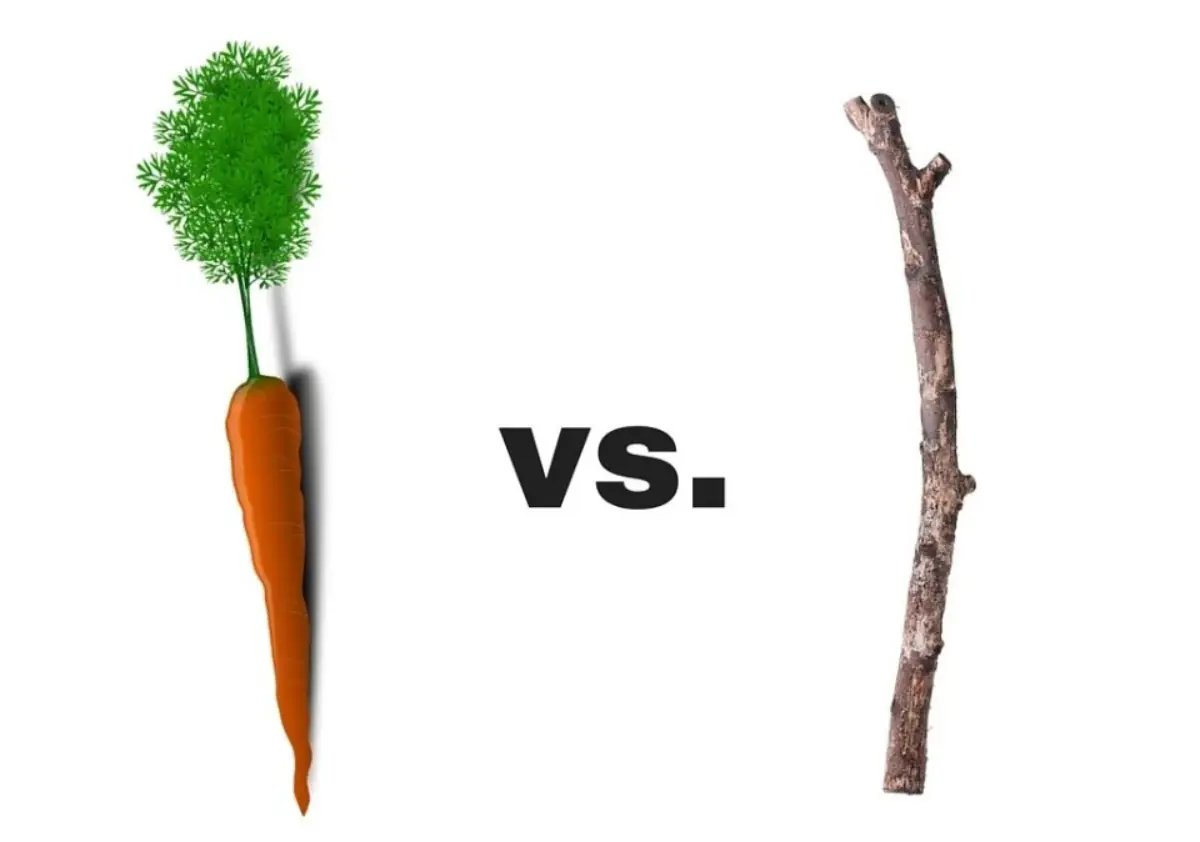In the realm of human cognition, there are two distinct modes of thinking that shape our problem-solving abilities: convergent thinking and divergent thinking. These two cognitive processes, though different in nature, work synergistically to enhance our creativity and problem-solving skills.
The Dance of Thoughts: Embracing the Symphony of Convergent and Divergent Thinking
Understanding the characteristics and applications of both convergent and divergent thinking can provide us with valuable insights into how we approach challenges and generate innovative ideas.
Definition of Convergent Thinking
Convergent thinking is a cognitive approach focused on finding a single, correct solution to a given problem. It is characterized by its emphasis on logical reasoning and deductive thinking. Individuals engaged in convergent thinking follow a linear thought process where they narrow down possibilities to arrive at a definitive answer or solution.
Through convergent thinking, individuals apply their analytical skills to evaluate different options systematically, looking for the most accurate and precise solution. This mode of thinking relies heavily on well-defined rules, established procedures, and established knowledge to guide the problem-solving process.
Definition of Divergent Thinking
In stark contrast to convergent thinking, divergent thinking is an approach aimed at generating multiple solutions or ideas for a given problem. It encourages individuals to explore various possibilities by breaking away from conventional patterns of thought.
Divergent thinkers seek out alternative perspectives that can lead to novel insights and creative solutions. Divergence promotes free-flowing thought processes where imagination takes flight without constraints.
It encourages individuals to think outside the box, challenging preconceived notions and exploring uncharted territories. Divergent thinkers revel in open-ended exploration as they embrace ambiguity rather than seeking immediate closure or resolution.
By understanding these fundamental definitions of convergent and divergent thinking, we lay the groundwork for investigating their respective characteristics further. In doing so, we can uncover the unique features and applications of each cognitive process, allowing us to harness their combined power for enhanced problem-solving and creative endeavors.
Exploring Convergent Thinking
Characteristics of Convergent Thinking
Convergent thinking is a cognitive process characterized by a linear thought progression and a clear objective. Individuals engaging in convergent thinking aim to find a single, correct solution to a problem. This approach prioritizes accuracy, precision, and logical reasoning in problem-solving.
It involves narrowing down possibilities through deductive thinking to reach the most optimal outcome. In convergent thinking, the thought process follows a structured path towards achieving the desired goal.
It involves breaking down complex problems into smaller, manageable parts and analyzing each step meticulously. The focus lies on eliminating incorrect or irrelevant options systematically until the only viable solution remains.
Examples of Convergent Thinking Applications
One of the domains where convergent thinking shines is mathematics. In this discipline, individuals employ convergent thinking to solve equations and determine the values of variables through step-by-step calculations.
Take Newton’s method as an illustrative example; it is an iterative numerical technique that uses convergent thinking to approximate roots of equations with increasing accuracy at each iteration.
The quadratic formula also exemplifies convergent thinking applied to solving quadratic equations efficiently. By following this formula’s systematic steps involving coefficients and constants, mathematicians can identify the two possible solutions accurately.
Another application area for convergent thinking is scientific research. When conducting experiments, researchers employ controlled variables and rigorous methodologies with the intention of arriving at definitive conclusions.
Within medicine, clinical trials exemplify this approach perfectly as they follow a structured framework using convergent thinking to determine not only the effectiveness but also the safety of new treatments before they are approved for widespread use.
By employing these examples in mathematics and scientific research, we can observe how crucial convergent thinking is in various fields where precision, accuracy, and definitive outcomes are paramount for success.
Unleashing Divergent Thinking
Characteristics of divergent thinking
Divergent thinking is a powerful cognitive process that encourages individuals to explore various possibilities beyond the constraints of traditional linear thought.
Unlike convergent thinking, which focuses on finding a single correct solution, divergent thinking allows for an expansive and non-linear exploration of ideas. It involves breaking free from conventional patterns and norms, embracing creativity and imagination in problem-solving.
This type of thinking thrives on open-ended exploration, where there are no right or wrong answers but rather a multitude of potential outcomes. One key characteristic of divergent thinking is its emphasis on brainstorming.
It involves generating a wide range of ideas without judgment or evaluation at the initial stage. This helps to foster a fertile ground for innovative solutions by allowing the mind to freely associate and connect seemingly unrelated concepts.
Moreover, divergent thinking promotes free association, encouraging individuals to make unconventional connections between ideas that may not initially appear related. By doing so, it enables unique insights and unconventional approaches to problem-solving.
Examples of divergent thinking applications
Artistic expression is one domain where divergent thinking flourishes. Artists engage in creating original paintings, sculptures, or music by exploring different techniques and perspectives. They embrace the freedom to deviate from traditional forms or representations, allowing their creativity to take flight using unconventional methods.
An iconic example would be Salvador Dali’s surrealist artwork exemplifying divergent thinking at its finest. Dali challenged traditional artistic norms by merging dreamlike imagery with precise realism in his works such as “The Persistence of Memory.” His ability to think beyond boundaries led him to create powerful visual metaphors that continue to captivate audiences worldwide.
Additionally, divergent thinking finds its place in innovation and problem-solving processes across industries. In fields like technology or product development, it encourages teams to generate multiple ideas and solutions to address complex challenges.
By embracing divergent thinking, these teams foster an environment that encourages creativity, enabling them to explore different possibilities and devising innovative approaches that lead to breakthrough products or services.
Companies like Apple, known for their innovative designs and user-friendly technology, owe their success in part to the divergent thinking mindset they cultivate within their teams.
Divergent thinking is a cognitive process characterized by its non-linear nature and the ability to explore various possibilities. It encourages brainstorming, free association, and the generation of unconventional ideas.
This type of thinking finds application not only in artistic expression but also in problem-solving and innovation processes across diverse fields. Embracing divergent thinking can unlock immense creativity and lead to unique insights that pave the way for ground-breaking discoveries and advancements in various domains of human endeavor.
20 quotes that touch upon the concepts of convergent and divergent thinking.
Not all of these quotes are directly mentioning these terms, but they embody the essence of these thinking styles:
- “The test of a first-rate intelligence is the ability to hold two opposed ideas in the mind at the same time, and still retain the ability to function.” – F. Scott Fitzgerald
- “Divergent thinking isn’t the same thing as creativity. I define creativity as the process of having original ideas that have value. Divergent thinking isn’t much use without its opposite, Convergent Thinking.” – Ken Robinson
- “We cannot solve our problems with the same thinking we used when we created them.” – Albert Einstein
- “The creative process is a process of surrender, not control.” – Julia Cameron
- “Innovation is the specific instrument of entrepreneurship. The act that endows resources with a new capacity to create wealth.” – Peter Drucker
- “Your work is going to fill a large part of your life, and the only way to be truly satisfied is to do what you believe is great work. And the only way to do great work is to love what you do.” – Steve Jobs
- “In every chaos, there is a cosmos, in every disorder a secret order.” – Carl Jung
- “Convergent thinking is a term coined by Joy Paul Guilford as the opposite of divergent thinking. It generally means the ability to give the ‘correct’ answer to standard questions that do not require significant creativity…” – Mihaly Csikszentmihalyi
- “Think left and think right and think low and think high. Oh, the things you can think up if only you try!” – Dr. Seuss
- “Creativity requires input, and that’s what research is. You’re gathering material with which to build.” – Gene Luen Yang
- “Discovery consists of seeing what everybody has seen and thinking what nobody has thought.” – Albert Szent-Gyorgyi
- “You can’t use up creativity. The more you use, the more you have.” – Maya Angelou
- “The best way to have a good idea is to have a lot of ideas.” – Linus Pauling
- “To live a creative life, we must lose our fear of being wrong.” – Joseph Chilton Pearce
- “The problems of the world cannot possibly be solved by skeptics or cynics whose horizons are limited by the obvious realities. We need men who can dream of things that never were.” – John F. Kennedy
- “What is now proved was once only imagined.” – William Blake
- “Creativity involves breaking out of expected patterns in order to look at things in a different way.” – Edward de Bono
- “It’s not about ideas. It’s about making ideas happen.” – Scott Belsky
- “Innovation distinguishes between a leader and a follower.” – Steve Jobs
- “The creative individual is both more primitive and more cultivated, more destructive, a lot madder and a lot saner, than the average person.” – Frank Barron
10 divergent thinking affirmations:
- “I embrace and value my unique perspective.”
- “I am open to exploring new possibilities and ideas.”
- “I trust in my ability to think creatively and generate innovative solutions.”
- “I release any limitations or self-doubt that hinder my creative thinking.”
- “I welcome diverse perspectives and see them as opportunities for growth.”
- “I am comfortable taking risks and stepping outside of my comfort zone.”
- “I trust my intuition and allow it to guide my creative thinking process.”
- “I am a creative problem solver, capable of finding unique and effective solutions.”
- “I embrace curiosity and constantly seek new connections and patterns.”
- “I celebrate the beauty of unconventional ideas and approaches.”
These affirmations can help foster a mindset that encourages divergent thinking and supports the generation of innovative and creative ideas. Remember to repeat these affirmations regularly and believe in their power to enhance your creative thinking abilities.
10 convergent thinking affirmations:
- “I have a sharp and focused mind that can analyze problems effectively.”
- “I trust my ability to find the most practical and efficient solutions.”
- “I am an excellent problem solver, capable of identifying the best options.”
- “I embrace challenges as opportunities to showcase my logical thinking skills.”
- “I have a keen eye for detail and can spot patterns and connections easily.”
- “I approach problems with a clear and organized mindset, leading to effective solutions.”
- “I am confident in my ability to make logical decisions and choose the most viable options.”
- “I have a natural talent for evaluating different possibilities and selecting the most suitable one.”
- “I excel at analyzing complex information and breaking it down into manageable components.”
- “I am a creative thinker who can generate innovative ideas within the boundaries of practicality.”
Remember to repeat these affirmations regularly, internalize them, and believe in your ability to think critically and make sound judgments. Affirmations can help reinforce positive thinking patterns and boost confidence in your convergent thinking skills.




























































